Dear Blog Readers:
At this juncture I find I must write a brief letter if I am going to continue publishing a public blog. Let me begin by saying that first and foremost, I am sane and second, I am a writer. Other writers understand where I am coming from. They understand concepts like genre, and genre appropriate writing and I thought that I had been explicit about the genre/s in my blog but clearly I have not. This blog represents the fusion of about four different genres: action research (based on systems theory), blog (informal, up to the writer, use of text and computer language and informal voice), surrealism (in the vein of Hunter S. Thompson and Andre Berton) and memoir.
It is clear that few of my readers truly understand the genre of memoir so I am going to take a moment to give some clarifications of what I mean by memoir by drawing on the words of some gurus in this genre. I am currently re-reading Inventing the Truth: The Art and Craft of Memoir by William Zinsser. According to Zinsser (1995), “This is a book by eight writers who have gone looking for their past in acts of writing.” These experts include: Russel Baker, Annie Dillard, Alfred Kazin, Toni Morrison, Eileen Simpson, Ian Frazier, Henry Louise Gates Jr. and Jill Kerr Conway. I use these expert writers as my guide when I write memoir.
I am particularly struck by certain things they say in this book about crafting memoir. Contrary to popular opinion, memoir is not to be confused with autobiography. In autobiography the writer gives an accurate day-by-day account of their entire life. According to the writer, this is the “true,” entire story of the writer’s life. This is not true for memoir. Memoir is merely a collection of snapshots that the writer chooses to present to their readership for impact. Some of it may not even be “true.” The House on Mango Street by Sandra Cisneros is a perfect example. We often teach this book as memoir but it is not the true story of Cisneros’ life and it is sometimes taught as the fairy tale or fiction genre as well. It also only focuses on a few years in the life of the protagonist Esperanza.
My blog is not a window into my entire mind and it is only a window into my brain, not my whole brain. I have been suddenly blessed with unusual talent and “genius” but you will just have to trust me on this. Some of you see the changes in me as sudden and dramatic. They are but they were spurred by a few powerful catalysts. 1) A diagnoses of MS
2) A change in my brain and body chemistry
3) A slowing down of my thoughts, if not my actions
4) A burst of spontaneous, creative energy that has allowed me enormous personal clarity, integrity and conviction.
The last has been a great challenge for many of my mentors, teachers and family members. They are accustomed to me looking to them for guidance and advice and then seeing me use what they tell me to move forward. I am still listening but as they say in yoga, “You are your own best teacher.” I am now my own best teacher. This does not mean I have ceased to value my mentors but as Mark Clarke notes in A Place to Stand (2006), we have to have a coherent self and a coherent set of beliefs before we can change the world. I am working from this place and using my gut as a guide. Although some of my readership may think they are dealing with “crazy Nadja,” they are not. I am uber-focused and so I can accomplish tasks that are seemingly huge and life-changing with little effort and almost no challenge. I can start several businesses just by sitting on my couch and using a computer. I now have the clarity, resources and intelligence to shape my life and those of the people I love into exactly what we dream of but I now need those people to just trust me because they cannot know what it is like to be in my head.
I now conclude my letter with a quote from Inventing the Truth and a caution that you read my blog for exactly what I have stated it is.
"The title Inventing the Truth was suggested by an insistent theme that kept bobbing up: that the writer of a memoir must become the editor of his or her own life, imposing a narrative pattern and an organizing idea o an unwieldy mass of half-remembered events. 'The autobiographer’s problem,' said Russel Baker 'Is that he knows too much; he knows the whole iceberg, not just the tip.' Refining the point, Annier Dillard said, 'The writer of any first person work must decide two obvious questions, what to put in and what to leave out.'"
I remind you now, do not read my blog as my daily “journal” or my whole story. Read it for what it is, a set off writing explorations and an examination of a variety of concepts affecting MS patients, those who know them and the issues we are facing globally today as we attempt to change the world.
I move forward at a pace that seems rapid but I am guided by Ghandi’s maxim, “Be the change you want to see in the world.”
Sincerely,
Nadja Yse Stringer
Thursday, May 15, 2008
Subscribe to:
Post Comments (Atom)
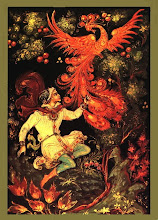
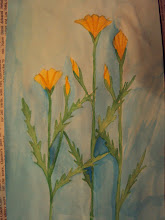












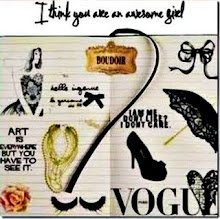
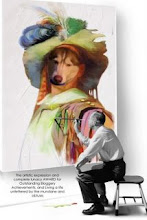





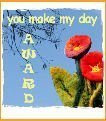

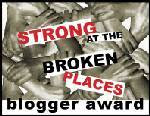






3 comments:
Hello Nadja! I just discovered your blog and enjoy your writing very much.
I appreciate this Letter to Readers because I recently experienced a bit of an identity crisis with my blog (see http://shortinthecord.blogspot.com/2008/04/identity-crisis.html). I came to realize that I am happier if I can just write what I feel like writing. In your case, I appreciate seeing a blog that offers a variety of insights into the author, and a variety of topics. It gets really boring to focus just on MS.
I also like your description of 'memoir.' I feel more confident in calling my essays a memoir now that I've seen an explanation.
Thank you for your posting, it has given me joy!
Joan
shortinthecord.blogspot.com
Thanks Joan. It's good to get feedback from a fellow writer. I plan to start publishing again soon. I'll keep you posted and now I'll check out your blog too.
I have to agree. The term memoir explains more clearly how many of us MS bloggers are sharing bits of ourselves. I like that.
Post a Comment